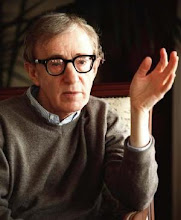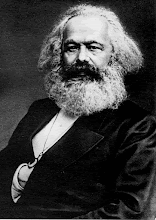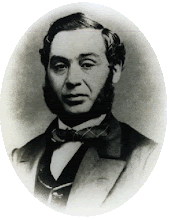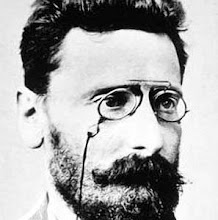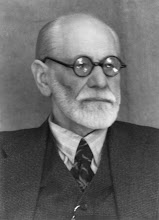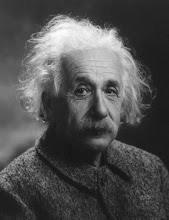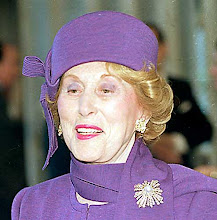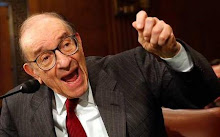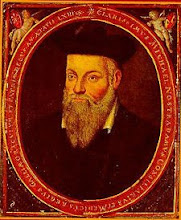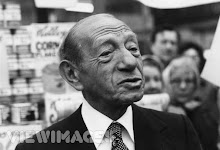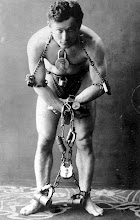 Harrison Ford (born July 13, 1942) is an Academy Award- and BAFTA-nominated, as well as Golden Globe-winning, American actor. Ford is best known for his performances as the titular character in the Indiana Jones film series and as Han Solo in the original Star Wars trilogy. He is also known for his role as the haunted android tracker Rick Deckard in Ridley Scott's sci-fi cult film Blade Runner and as CIA operative Jack Ryan in the films Patriot Games and Clear and Present Danger. His four-decade career also includes roles in other Hollywood blockbusters such as The Fugitive, Air Force One, Witness, Presumed Innocent and What Lies Beneath. At one point, Ford had roles in the top five box-office hits of all time[citation needed], though his role in E.T. the Extra-Terrestrial (as Elliot's school principal) was deleted from the final cut of the film. Five of his films have been inducted into the National Film Registry.In 1997, Ford was ranked # 1 in Empire's "The Top 100 Movie Stars of All Time" list. As of July 2008, the United States domestic box office grosses of Ford's films total almost US$3.4 billion,[1] with worldwide grosses surpassing $6 billion, making Ford the No. 2[2] U.S. domestic box-office star for lead roles behind only Eddie Murphy. If counting both supporting movie roles as well as starring roles, Ford would be the 5th biggest film star,[3] behind that of voice-actor Frank Welker, Samuel L. Jackson, Eddie Murphy and Tom Hanks.
Harrison Ford (born July 13, 1942) is an Academy Award- and BAFTA-nominated, as well as Golden Globe-winning, American actor. Ford is best known for his performances as the titular character in the Indiana Jones film series and as Han Solo in the original Star Wars trilogy. He is also known for his role as the haunted android tracker Rick Deckard in Ridley Scott's sci-fi cult film Blade Runner and as CIA operative Jack Ryan in the films Patriot Games and Clear and Present Danger. His four-decade career also includes roles in other Hollywood blockbusters such as The Fugitive, Air Force One, Witness, Presumed Innocent and What Lies Beneath. At one point, Ford had roles in the top five box-office hits of all time[citation needed], though his role in E.T. the Extra-Terrestrial (as Elliot's school principal) was deleted from the final cut of the film. Five of his films have been inducted into the National Film Registry.In 1997, Ford was ranked # 1 in Empire's "The Top 100 Movie Stars of All Time" list. As of July 2008, the United States domestic box office grosses of Ford's films total almost US$3.4 billion,[1] with worldwide grosses surpassing $6 billion, making Ford the No. 2[2] U.S. domestic box-office star for lead roles behind only Eddie Murphy. If counting both supporting movie roles as well as starring roles, Ford would be the 5th biggest film star,[3] behind that of voice-actor Frank Welker, Samuel L. Jackson, Eddie Murphy and Tom Hanks.Ford was born on July 13, 1942 to Dorothy (née Dora Nidelman), a homemaker and former radio actress and Christopher Ford (née John William Ford), an advertising executive and also a former actor.[4][5] Harrison Ford's maternal grandparents, Anna Lifschutz and Harry Nidelman, were Jewish immigrants from Minsk, Belarus (at that time a part of the Russian Empire).[4] His paternal grandparents, Florence Veronica Niehaus and John Fitzgerald Ford, were of German and Irish Catholic descent, respectively.[4] When asked in which religion he was raised, Ford jokingly responded, "Democrat".[6] He has also said that he feels "Irish as a person, but I feel Jewish as an actor".[7]Ford was active in the Boy Scouts of America, and achieved its second-highest rank, Life Scout. He worked at a Scout camp as a counselor for the Reptile Study merit badge. Because of this, he and Eagle Scout director Steven Spielberg later decided that the character of young Indiana Jones would be depicted as a Life Scout in the film Indiana Jones and the Last Crusade. They also jokingly reversed Ford's knowledge of reptiles into Jones's fear of snakes.In 1960, Ford graduated from Maine East High School in Park Ridge, Illinois. His was the first student voice broadcast on his high school's new radio station, WMTH-FM, and he was its first sportscaster during his senior year, 1959–1960. The radio room still bears his graffiti. He attended Ripon College in Wisconsin, where he was a member of the Sigma Nu fraternity. He took a drama class in his junior year, chiefly as a way to meet women. Ford, a self-described "late bloomer", became fascinated with acting. Towards the end of his freshman year, he was a member of a folk band called The Brothers Gross; playing gutbucket. Ford did not graduate.
In 1964, Ford travelled to Los Angeles, California to apply for a job in radio voice-overs. He did not get it, but stayed in California and eventually signed a $150 a week contract with Columbia Pictures's New Talent program, playing bit roles in films. His first known part was an uncredited role as a bellhop in Dead Heat on a Merry-Go-Round (1966). A popular myth has him appearing in a scene of The Great Escape but this movie was filmed while he was still attending Ripon.[8] There is little record of his non-speaking roles (or "extra" work) in film. His speaking roles continued next with Luv (1967), though he was still uncredited. He was finally credited as "Harrison J. Ford" in the 1967 Western film, A Time For Killing, but the "J" didn't stand for anything since he has no middle name. It was added to avoid confusion with a silent film actor named Harrison Ford, who appeared in more than 80 films between 1915 and 1932, and died in 1957. Ford later said that he was unaware of the existence of the earlier Harrison Ford until he came upon a star with his own name on the Hollywood Walk of Fame.Ford soon dropped the "J" and worked for Universal Studios, playing minor roles in many television series throughout the late 1960s and early 1970s, including Gunsmoke, Ironside, The Virginian, The F.B.I., Love, American Style, and Kung Fu. He then appeared in the western Journey to Shiloh (1968) and had an uncredited role in Michelangelo Antonioni's 1970 film Zabriskie Point as an airport worker. Not happy with the roles being offered to him, Ford became a self-taught professional carpenter to support his then-wife and two small sons. While working as a carpenter, he became a stagehand for the popular rock band The Doors. He also built a sun deck for Sally Kellerman and a recording studio for Sergio Mendes.He turned to acting again when George Lucas, who had hired him to build cabinets in his home, cast him in a pivotal supporting role for his film American Graffiti (1973). His relationship with Lucas was to have a profound effect on Ford's career. After director Francis Ford Coppola's film The Godfather was a success, he hired Ford to do expansions of his office and Harrison was given a small role in his next two films, The Conversation (1974) and Apocalypse Now (1979).
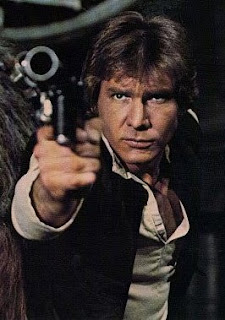 Ford's work as a carpenter would land him his biggest role to date. In 1975, director George Lucas used him to read lines for actors being cast for parts in his upcoming space opera, Star Wars (1977). Steven Spielberg convinced Lucas that Ford was meant to star in the film, resulting in his being cast as Han Solo. Star Wars became the biggest-grossing film in history and established Harrison Ford as a superstar. He went on to star in the Star Wars sequels, The Empire Strikes Back (1980) and Return of the Jedi (1983), as well as The Star Wars Holiday Special (1978). He wanted Lucas to write in the death of the iconic Han Solo at the end of either sequels, saying "that would have given the whole film a bottom", but Lucas refused.[9]Ford's stardom was boosted even more when he starred as Indiana Jones in the Lucas/Spielberg collaboration Raiders of the Lost Ark (1981). He reprised the role for the prequel Indiana Jones and the Temple of Doom (1984), and the sequel Indiana Jones and the Last Crusade (1989), which turned Ford himself into a blockbuster phenomenon. He returned to his role as Indiana Jones for a 1993 episode of the television series The Young Indiana Jones Chronicles and later for the film Indiana Jones and the Kingdom of the Crystal Skull (2008). Unlike many other actors of the same or similar genre, Ford's authenticity as a daring action hero was supported by his willingness to perform many of his own stunts in the Indiana Jones films.[citation needed] To reprise his role for latest film in the series, Ford (aged 64 at the time) worked out 3 hours a day and went on a high protein diet.Ford has been in numerous other movies including Heroes (1977), Force 10 from Navarone (1978), and Hanover Street (1979). Ford also co-starred alongside Gene Wilder in the buddy-Western The Frisco Kid (1979), playing a bank robber with a heart of gold. He then starred as Rick Deckard in Ridley Scott's cult sci-fi classic Blade Runner (1982), and in a number of dramatic-action films: Peter Weir's Witness (1985) and The Mosquito Coast (1986), and Roman Polanski's Frantic (1988). He also starred in Mike Nichols's romantic drama Working Girl (1988). In 2002 Ford played a key role as the fearless Captain Alexei Vostrikov in the National Geographic film K-19: The Widowmaker.The 1990s brought Ford the role of Jack Ryan in Tom Clancy's Patriot Games (1992) and Clear and Present Danger (1994), as well as leading roles in Alan Pakula's Presumed Innocent (1990) and The Devil's Own (1997), Andrew Davis's The Fugitive (1993), Sydney Pollack's remake of Sabrina (1995), and Wolfgang Petersen's Air Force One (1997). Ford has also played straight dramatic roles, including an adulterous husband with a terrible secret in both Presumed Innocent (1990) and What Lies Beneath (2000), and a recovering amnesiac in Mike Nichols' Regarding Henry (1991).Many of Ford's major film roles came to him by default through unusual circumstances: he won the role of Han Solo while reading lines for other actors, was cast as Indiana Jones because Tom Selleck was not available, and took the role of Jack Ryan due to Alec Baldwin's fee demands (Baldwin had previously played the role in The Hunt for Red October).Ford also appeared on Robot Chicken season 1 episode 8.Despite being one of the most financially successful actors of his generation, Ford has received just one Oscar nomination, that of Best Actor for Witness. On June 2, 2003, he received a star on the Hollywood Walk of Fame.On October 6, 2006, Ford was awarded the Jules Verne Spirit of Nature Award for his work in nature and wildlife preservation. The ceremony took place at the historic Shrine Auditorium in Los Angeles, California.
Ford's work as a carpenter would land him his biggest role to date. In 1975, director George Lucas used him to read lines for actors being cast for parts in his upcoming space opera, Star Wars (1977). Steven Spielberg convinced Lucas that Ford was meant to star in the film, resulting in his being cast as Han Solo. Star Wars became the biggest-grossing film in history and established Harrison Ford as a superstar. He went on to star in the Star Wars sequels, The Empire Strikes Back (1980) and Return of the Jedi (1983), as well as The Star Wars Holiday Special (1978). He wanted Lucas to write in the death of the iconic Han Solo at the end of either sequels, saying "that would have given the whole film a bottom", but Lucas refused.[9]Ford's stardom was boosted even more when he starred as Indiana Jones in the Lucas/Spielberg collaboration Raiders of the Lost Ark (1981). He reprised the role for the prequel Indiana Jones and the Temple of Doom (1984), and the sequel Indiana Jones and the Last Crusade (1989), which turned Ford himself into a blockbuster phenomenon. He returned to his role as Indiana Jones for a 1993 episode of the television series The Young Indiana Jones Chronicles and later for the film Indiana Jones and the Kingdom of the Crystal Skull (2008). Unlike many other actors of the same or similar genre, Ford's authenticity as a daring action hero was supported by his willingness to perform many of his own stunts in the Indiana Jones films.[citation needed] To reprise his role for latest film in the series, Ford (aged 64 at the time) worked out 3 hours a day and went on a high protein diet.Ford has been in numerous other movies including Heroes (1977), Force 10 from Navarone (1978), and Hanover Street (1979). Ford also co-starred alongside Gene Wilder in the buddy-Western The Frisco Kid (1979), playing a bank robber with a heart of gold. He then starred as Rick Deckard in Ridley Scott's cult sci-fi classic Blade Runner (1982), and in a number of dramatic-action films: Peter Weir's Witness (1985) and The Mosquito Coast (1986), and Roman Polanski's Frantic (1988). He also starred in Mike Nichols's romantic drama Working Girl (1988). In 2002 Ford played a key role as the fearless Captain Alexei Vostrikov in the National Geographic film K-19: The Widowmaker.The 1990s brought Ford the role of Jack Ryan in Tom Clancy's Patriot Games (1992) and Clear and Present Danger (1994), as well as leading roles in Alan Pakula's Presumed Innocent (1990) and The Devil's Own (1997), Andrew Davis's The Fugitive (1993), Sydney Pollack's remake of Sabrina (1995), and Wolfgang Petersen's Air Force One (1997). Ford has also played straight dramatic roles, including an adulterous husband with a terrible secret in both Presumed Innocent (1990) and What Lies Beneath (2000), and a recovering amnesiac in Mike Nichols' Regarding Henry (1991).Many of Ford's major film roles came to him by default through unusual circumstances: he won the role of Han Solo while reading lines for other actors, was cast as Indiana Jones because Tom Selleck was not available, and took the role of Jack Ryan due to Alec Baldwin's fee demands (Baldwin had previously played the role in The Hunt for Red October).Ford also appeared on Robot Chicken season 1 episode 8.Despite being one of the most financially successful actors of his generation, Ford has received just one Oscar nomination, that of Best Actor for Witness. On June 2, 2003, he received a star on the Hollywood Walk of Fame.On October 6, 2006, Ford was awarded the Jules Verne Spirit of Nature Award for his work in nature and wildlife preservation. The ceremony took place at the historic Shrine Auditorium in Los Angeles, California.Ford's star power has waned in recent years, the result of appearing in numerous critically derided and commercially disappointing movies, including Six Days Seven Nights (1998), Random Hearts (1999), K-19: The Widowmaker (2002), Hollywood Homicide (2003), and Firewall (2006). One exception is 2000's What Lies Beneath, which ended up grossing over $155 million in the United States and $300 million world-wide.In 2004, Ford declined a chance to star in the thriller Syriana, later commenting that "I didn't feel strongly enough about the truth of the material and I think I made a mistake."[13] The role eventually went to George Clooney, who won an Oscar and a Golden Globe for his work. Ford also turned down leading roles in the critically acclaimed films Traffic and A History of Violence as well as The Patriot.Also in 2004, Ford appeared in the straight-to-video Water to Wine, credited as "Jethro the Bus Driver", as a favor to his son Malcolm.Ford enjoyed recent success with the release of Indiana Jones and the Kingdom of the Crystal Skull, another collaboration between George Lucas and Steven Spielberg. Production of the movie lasted from June to October 2007, and it was released on May 22, 2008.[14] The film received generally positive reviews and became the second highest-grossing film at the box office for Memorial Weekend.He has also completed filming on a film called Crossing Over, directed by Wayne Kramer. He will play Immigrations officer Max Brogan alongside Sean Penn and Ray Liotta.Ford has also finished recording narration for the upcoming feature documentary film about the Dalai Lama entitled Dalai Lama Renaissance.He recently expressed interest in returning to the Jack Ryan franchise.Ford is one of Hollywood's most notoriously private actors, zealously guarding his personal life. He has two sons (Benjamin and Willard) with his first wife, Mary Marquardt, as well as two children (Malcolm and Georgia) with his second wife, screenwriter Melissa Mathison, and he is currently (as of 2002) engaged to Calista Flockhart who has a son, Liam. Ford's first grandson, Eliel, was born in 1993,First grandaughter, Giuliana in 1997, while his second grandson, Ethan, was born in 2000. Eliel is Willard's son, and Ethan is Benjamin's son. Benjamin is also the owner of Ford's Filling Station, a gastro pub in Culver City, California.Ford cut his chin in a car accident hitting a telephone pole in Northern California when he was about 20. The scar is visible in his films. An explanation for it on film is offered in Indiana Jones and the Last Crusade, in which it depicts a young Indiana Jones cutting his chin attempting to crack a whip to ward off a lion. In Working Girl, Ford's character explains that it happened when he passed out and hit his chin on the toilet when a college girlfriend was piercing his ear. In June, 1983 at the age of 40, during the filming of Indiana Jones and the Temple of Doom in London, he herniated a disc in his back, resulting in him flying back to Los Angeles for an operation and returning to work just over six weeks later.
 Harrison Ford (1942. július 13.) Oscar-díjra jelölt amerikai színész. Legismertebb szerepei a vagány, cinikus űrpilóta, Han Solo az eredeti Csillagok háborúja-trilógiában, és a kalandvágyó régészprofesszor, Dr. Henry „Indiana” Jones Jr. az Indiana Jones-filmsorozatban. Négy évtizedet átölelő karrierje során olyan népszerű filmekben játszott még, mint a Szárnyas fejvadász, A szökevény vagy Az elnök különgépe. Egy ponton minden idők öt legnagyobb bevételt elérő filmjében is szerepe volt (noha az E.T., a földönkívüliből jeleneteit kivágták végül); a Nemzeti Filmarchívumba öt filmjét választotta be a Egyesült Államok Nemzeti Filmmegőrzési Bizottsága.Az Empire Fordot első helyre sorolta a „Minden idők 100 legnagyobb filmsztárja”-listáján. 2007 májusával bezárólag filmjei 3,1 milliárd dollárt[1] hoztak az amerikai jegypénztáraknál, míg világviszonylatban ez az összeg megközelíti a 6 milliárdot. Ezzel Ford a 3. legnagyobb box office-sztár Észak-Amerikában Eddie Murphy és Tom Hanks mögött.
Harrison Ford (1942. július 13.) Oscar-díjra jelölt amerikai színész. Legismertebb szerepei a vagány, cinikus űrpilóta, Han Solo az eredeti Csillagok háborúja-trilógiában, és a kalandvágyó régészprofesszor, Dr. Henry „Indiana” Jones Jr. az Indiana Jones-filmsorozatban. Négy évtizedet átölelő karrierje során olyan népszerű filmekben játszott még, mint a Szárnyas fejvadász, A szökevény vagy Az elnök különgépe. Egy ponton minden idők öt legnagyobb bevételt elérő filmjében is szerepe volt (noha az E.T., a földönkívüliből jeleneteit kivágták végül); a Nemzeti Filmarchívumba öt filmjét választotta be a Egyesült Államok Nemzeti Filmmegőrzési Bizottsága.Az Empire Fordot első helyre sorolta a „Minden idők 100 legnagyobb filmsztárja”-listáján. 2007 májusával bezárólag filmjei 3,1 milliárd dollárt[1] hoztak az amerikai jegypénztáraknál, míg világviszonylatban ez az összeg megközelíti a 6 milliárdot. Ezzel Ford a 3. legnagyobb box office-sztár Észak-Amerikában Eddie Murphy és Tom Hanks mögött.Ford 1942. július 13-án, 11 óra 41 perckor, egy hétfői napon született Chicagóban, Illinois államban a Swedish Covenant Hospitalban. Édesanyja, Dorothy (született Dora Nidelman; 1917. október 17. – 2004. február 10.) háztartásbeli, korábban rádiós színésznő, míg apja, Christopher Ford (született John William Ford; 1906. november 20. – 1999. február 10.) reklámszakember, korábban színész volt.[2][3] Ford anyai nagyszülei, Anna Lifschutz és Harry Nidelman Minszkből érkezett zsidó bevándorlóként telepedtek le az Egyesült Államokban.[2] Apai ágon nagyszülei, Florence Veronica Niehaus és John Fitzgerald Ford német, illetve ír katolikus gyökerekkel rendelkeztek.[2] Arra a kérdésre, hogy melyik vallás szerint nevelték, Ford tréfálkozva azt válaszolta, „demokrata”;[4] úgy nyilatkozott továbbá, hogy „emberként írnek, színészként zsidónak” érzi magát.[5]Ford aktív tagja volt az Amerikai Cserkészszövetségnek, ahol a második legmagasabb rangot, a Life Scoutot érte el, s hüllőtanulmányozó érdemjelvényes tanácsadóként dolgozott a cserkésztárborban. Később ennek hatására döntött úgy Steven Spielberg rendezővel, hogy az ifjú Indiana Jones cserkészként jelenik meg az Indiana Jones és az utolsó kereszteslovagban. Ford hüllőkhöz fűződő ismereteit viccből Jones kígyóktól való félelmében interpretálták.A színész 1960-ban végezte el a Maine East High Schoolt az illinois-i Park Ridge-ben. Ő volt az első tanuló, aki megszólalhatott iskolája újként indult rádióállomásán, a WMTH-FM-en, s egyben az első sporttudósító is végzős évében, 1959/1960-ban. A rádiószoba még ma is őrzi graffitiit. A középiskolát elvégezve a Ripon College következett Wisconsinban,[6] ahol Ford a Sigma Nu Szövetség tagja lett. Első évében drámaórákat vett fel, de főként azért, hogy lányokkal ismerkedhessen. A magát „későn érőnek” valló Fordot magával ragadta a színészet. Az év vége felé belépett a The Brothers Gross folkbandába, amiben gutbucketen játszott. Diplomát a Riponon végül nem szerzett, mert a követelmények teljesítésének hiányában eltanácsolták.
1964-ben Ford Los Angelesbe utazott, hogy rádiós bemondóként szerezzen munkát. Ugyan ez nem sikerült neki, de ennek ellenére Kaliforniában maradt, s végül leszerződött a Columbia Pictures Új Tehetség-programjába,[6] aminek értelmében 150 dolláros heti fizetségért statisztált filmekben. Első ismert szöveges szerepe egy londiner volt az 1966-os Agyafúrt kasszafúróban, bár neve nem került fel a stáblistára. Az egy évvel későbbi A Time For Killing című westernhez fűződik első névleges, egészen pontosan Harrison J. Fordként feltüntetett megjelenése, noha a „J” valójában nem takart semmit, hiszen Fordnak nincs középső neve (az 1915 és 1932 között aktív, 1957-ben elhunyt némafilm-színész Harrison Fordtól való megkülönböztetés végett került bele). Ford állítása szerint nem tudott a korábbi névrokonáról, mígnem ráakadt egy csillagra saját nevével a Hollywoodi Hírességek Sétányán. Ford rövidesen elhagyta az ominózus „J” betűt nevéből, s a Universal Picturesnél[6] kezdett apró szerepeket játszani több tévésorozatban is az 1960-as évek végén és az 1970-es évek elején; feltűnt többek között a Petrocelli és a Kung Fu egy-egy epizódjában. Szerepelt egy újabb westernben, a Journey to Shiloh-ban és statisztált Antonioni 1970-es Zabriskie Point című filmjében egy reptéri munkásként. Mivel nem volt elégedett a felkínált szerepekkel, Ford hivatásos áccsá képezte saját magát, hogy jobban el tudja tartani akkori feleségét és két kisfiát.[6] A helyi könyvtárból kölcsönzött szakkönyvekből sajátította el a mesterséget,[6] s néhány asztalosmunkája ma is Hollywood Hills környékének részét képezi. Szakmájának köszönhetően háttérmunkásként dolgozhatott a népszerű The Doors együttesnél, napozóágyat épített Sally Kellermannek és hangstúdiót Sergio Mendesnek.[6]Újfent a színészet felé fordult, mikor George Lucas otthonában szekrényeket készített, s a rendező-forgatókönyvíró egy jelentős mellékszerepet adott neki az American Graffitiben (1973).[6] Ford kapcsolata Lucasszal mély benyomást tett karrierjére. Miután Francis Ford Coppola sikert aratott A keresztapával, felbérelte Fordot irodája kibővítésére, s kisebb szerepeket adott neki következő két filmjében, a Magánbeszélgetésben és az Apokalipszis mostban. Ford állása ácsként élete legnagyobb szerepéhez juttatta. 1975-ben George Lucas szövegfelolvasásra kérte fel a Csillagok háborúja szereplőválogatásain a szerepekre jelentkező színészek partnereként. A meghallgatásokon Steven Spielberg felfigyelt rá, mennyire illik Fordra Han Solo szerepe, így meggyőzte Lucast, hogy adja neki a feladatot, ami végül meghozta a hírnevet a színész számára. Eljátszotta Solót a Star Wars két folytatásában, A Birodalom visszavágban és A Jedi visszatérben, illetve a The Star Wars Holiday Specialben is. Azt akarta, hogy Lucas A Jedi visszatér végére írja bele az ikonikus karakter, Han Solo halálát, ami „az egész filmnek feneket kerítene”, ám a filmes ezt elutasította.[7]Ford újabb löketet nyert pályájának, mikor Lucas és Spielberg közös produkciójában, Az elveszett frigyláda fosztogatóiban eljátszhatta Indiana Jones szerepét. A film két folytatásával, az Indiana Jones és a végzet templomával és az Indiana Jones és az utolsó kereszteslovaggal Ford kasszarobbantó jelenséggé vált. Hatvanas éveiben újfent magára öltötte a kalandor jelmezét az Indiana Jones és a kristálykoponya királyságában, melynek bemutatójára 2008-ban került sor. Számos más színésszel ellentétben, akik hasonló szerepet játszottak a műfajban, Ford a hitelesség érdekében több ízben elvállalt nem egyszer kockázatos kaszkadőrjeleneteket is.1982-ben mutatták be Ford főszereplésével a Szárnyas fejvadász című, Philip K. Dick novelláján nyugvó futurisztikus sci-fit. Ridley Scott filmje anyagilag nem váltotta be a hozzá fűzött reményeket, azonban mára kultstátusba emelkedett, újabb halhatatlan szereppel gazdagítva a színész pályáját. A '80-as évek második felében Ford több fajsúlyos drámában is főszerepet kapott, így Peter Weir A kis szemtanú és Moszkító part című filmjeiben; előbbiben nyújtott alakításáért Oscar- és Arany Glóbusz-díjra jelölték, s utóbbiért szintén a Golden Globe öt legjobb drámai színésze között szerepelt. 1988-ban Roman Polanski rendezte az Őrületben, s még ugyanebben az évben egy könnyedebb produkcióban, a hat Oscar-díjra jelölt Dolgozó lányban is feltűnt Melanie Griffith és Sigourney Weaver partnereként.A '90-es években Ford folytatta az akcióhősi és drámai vonalat is. A Tom Clancy amerikai író által alkotott Jack Ryan ügynök bőrébe bújt két filmben is, átvéve a szerepet Alec Baldwintól, aki a Vadászat a Vörös Októberre filmváltozatában játszotta a CIA-elemzőt; a Férfias játékok (1992) és a Végveszélyben (1994) komoly sikereket ért el a jegypénztáraknál, s a széria később folytatódott A rettegés arénájával, ám új, immáron a harmadik színésszel (Ben Affleckkel) a sorozatban. 1993-ban Ford a korábbi televíziós sorozatból készült A szökevény címszerepében volt látható; a produkció rendkívüli kritikai- és anyagi sikerre talált, a másik főszereplőnek, Tommy Lee Jones-nak a Filmakadémia elismerését is meghozta; Ford harmadik Golden Globe-jelölését érdemelte ki szerepformálásáért. Két évvel később a Sabrina című 1954-es romantikus film új változatában versengett Greg Kinnearrel Julia Ormond kegyeiért, amivel újabb Arany Glóbusz-nominációt szerzett, ám ezúttal a vígjátéki kategóriában. 1997-ben két filmje is a mozikba került, amire 1988 óta nem volt példa. Alan J. Pakula utolsó rendezése, Az ördög maga nem teljesített az elvárások szerint, azonban Az elnök különgépe, melyben Ford az Amerikai Egyesült Államok elnökét alakította, az év egyik legjövedelmezőbb filmje lett, az akkori valódi elnök, Bill Clinton elismerését is kivívva.2000-ben Ford teljesen más oldaláról mutatkozott meg a Temetetlen múlt című thrillerben, melyben Michelle Pfeiffer férjét alakította. Robert Zemeckis alkotása újfent a jegypénztárak első számú emberévé avatta az ekkor 58 éves színészt. Két évvel később, az Atomcsapda című filmben, amely javarészt egy tengeralattjáró fedélzetén játszódik, Ford Alekszej Vosztrikovot formálta meg, s szerepének megfelelően orosz akcentussal beszélt a film során. A költséges mozi azonban, akárcsak a színész következő filmje, a 2003-as Hollywoodi őrjárat (amely Magyarországon csak DVD-n jelent meg, Ford-filmtől rendkívül szokatlanul) súlyos kudarcnak bizonyult. Ekkor Ford karrierje leghosszabb szünete következett, hiszen legközelebb csak 2006-ban, a Tűzfalban tért vissza a vászonra. 2008 májusától legkedveltebb szerepei egyékében, Indiana Jonesként látható újra, nyár végétől pedig a Crossing Over című, sokszereplős drámában lesz látható.2004-ben Ford visszautasította a Sziriana című film egyik szerepét, amit később így kommentált: „Nem éreztem elég erősen a téma igazságát, és azt hiszem, hibát követtem el.” Végül George Clooney kapta a munkát, ami Oscar- és Golden Globe-díjat hozott számára. Ford szintén nem vállalta el a kritika által kiemelten fogadott Traffic és Erőszakos múlt főszerepét, ahogy a A hazafira is nemet mondott, Mel Gibsonnak hagyva meg a teret.
Noha generációja egyik legsikeresebb színésze, Ford csupán egy Oscar-jelölést szerzett mindezidáig. 2003. június 2-án saját csillagot kapott a Hollywoodi Hírességek Sétányán. A Golden Globe-ot odaítélő Amerikában működő külföldi újságírók 2002-ben, az Amerikai Filmintézet pedig 2000-ben tüntette ki életműdíjjal.
Ford első felesége főiskolai szerelme, Mary Marquardt[6] lett 1964-ben. Házasságuk 15 éven át tartott, s ezidő alatt két fiuk született. 1983-ban a színész újranősült, ezúttal Melissa Mathisont vette el, aki szintén két gyermeket hozott a világra tőle: Malcolmot és Georgiát.[6] A család New York City-ben, illetve egy 800 holdnyi területű farmon élt Jackson Hole közelében, Wyoming államban.[6] Ford filmes szerződései tartalmazták, hogy a helyszíni forgatásokra családját is magával viheti.[6] A 2000-es évek elején Ford és Mathison benyújtották a válókeresetet, amit 2004-ben véglegesítettek.[6] Ford 2002 óta a nála 22 évvel fiatalabb színésznővel, Calista Flockharttal él együtt; eljegyzeték egymást, de esküvőre mindezidáig nem került sor.[6]Ford a Conservation International igazgatóságának tagja. 2006. október 6-án megkapta továbbá a Jules Verne Spirit of Nature Awardot a természet és vadvilág megőrzésében végzett munkájáért. A ceremónia helyszínéül a történelmi Shrine Auditórium szolgált, Los Angelesben.[8] Ford 800 hold méretű ranchének hozzávetőleg a felét természeti megőrésre ajánlotta fel.


 Like many of his gangster counterparts, Siegel yearned to be legitimate. The perfume of legitimacy and respectability he craved was still well beyond his reach. But by the spring of 1946, that perfume became stronger - wafting in on the heat waves of
Like many of his gangster counterparts, Siegel yearned to be legitimate. The perfume of legitimacy and respectability he craved was still well beyond his reach. But by the spring of 1946, that perfume became stronger - wafting in on the heat waves of  Bugsy Siegel az 1900-as évek elején látta meg a napvilágot egy szegény zsidó család sarjaként. A brooklyn-i utcákon felnőve elkerülhetetlen volt, hogy bele ne csöppenjen az utcai bandák életébe, amelyek kocsilopásból és illegális szerencsejátékokból - köztük pókerből - tartották fent magukat. Bugsy sikeresen menetelt felfelé a gengszterré válás szamárlétráján, amikor felfigyelt rá a genovai klán két feje, Charles 'Lucky' Luciano és Frank Costello, akik a szesztilalom idején a jól fizető csempész üzletág vezetőjévé tették meg őt. Ezzel igen komoly ekzisztenciát teremthetett magának, amelyből komoly pénzeket áldozott három fő szenvedélyére: a nőkre, a kártyára és az autóversenyzésre. Később Bugsy saját kaszinót is vásárolt magának a Las Vegas Strip-en, amely a Flamingo nevet viselte. Terjeszkedő birodalmával azonban egyre több maffiavezér tyúkszemére lépett rá, így a vég szinte predesztinálható volt a számára. Utolsó napja 1947. június 20-án köszöntött rá, amikor Beverly Hills-i otthonában gyilkos golyózápor végzett vele. Hogy ki állt a fegyver másik végén és kinek a megbízásából, arra máig nem derült fény.
Bugsy Siegel az 1900-as évek elején látta meg a napvilágot egy szegény zsidó család sarjaként. A brooklyn-i utcákon felnőve elkerülhetetlen volt, hogy bele ne csöppenjen az utcai bandák életébe, amelyek kocsilopásból és illegális szerencsejátékokból - köztük pókerből - tartották fent magukat. Bugsy sikeresen menetelt felfelé a gengszterré válás szamárlétráján, amikor felfigyelt rá a genovai klán két feje, Charles 'Lucky' Luciano és Frank Costello, akik a szesztilalom idején a jól fizető csempész üzletág vezetőjévé tették meg őt. Ezzel igen komoly ekzisztenciát teremthetett magának, amelyből komoly pénzeket áldozott három fő szenvedélyére: a nőkre, a kártyára és az autóversenyzésre. Később Bugsy saját kaszinót is vásárolt magának a Las Vegas Strip-en, amely a Flamingo nevet viselte. Terjeszkedő birodalmával azonban egyre több maffiavezér tyúkszemére lépett rá, így a vég szinte predesztinálható volt a számára. Utolsó napja 1947. június 20-án köszöntött rá, amikor Beverly Hills-i otthonában gyilkos golyózápor végzett vele. Hogy ki állt a fegyver másik végén és kinek a megbízásából, arra máig nem derült fény.

 A Häagen-Dazs céget egy zsidó házaspár alapította Bronxban, név szerint: Reuben és Rose Mattus. Ennek megfelelően az Amerikában gyártott Häagen-Dazs kóser, és nagy valószínűséggel a Franciaországból hozzánk érkező is az.
A Häagen-Dazs céget egy zsidó házaspár alapította Bronxban, név szerint: Reuben és Rose Mattus. Ennek megfelelően az Amerikában gyártott Häagen-Dazs kóser, és nagy valószínűséggel a Franciaországból hozzánk érkező is az.
 Breuer Lajos Marcell, vagy nemzetközileg ismert formában Marcel Breuer (
Breuer Lajos Marcell, vagy nemzetközileg ismert formában Marcel Breuer (








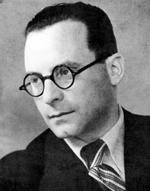


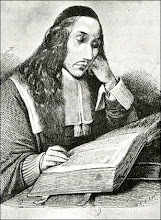
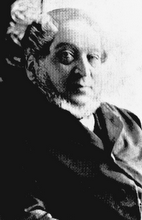
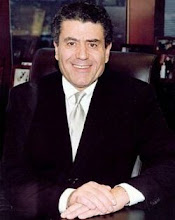
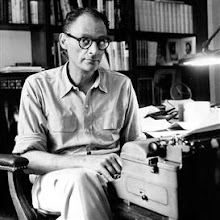.jpg)

